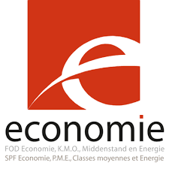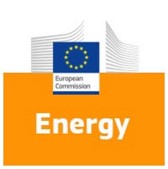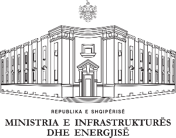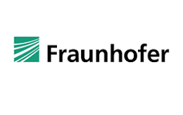Multi-energy planning of interconnected systems
— Energy systems are rapidly getting more and more complex with the increasing integration of intermittent energy sources and energy markets coupling together on a large scale.


Our web-based Artelys Crystal Super Grid platform enables you to assess the costs and benefits of infrastructure projects, the impacts of proposed actions, and optimize investments in generation assets, grids and flexibility solutions. Combined with the most advanced quantitative tools, our interface enhances collaboration and information sharing.
Artelys Crystal Super Grid is the underlying tool for the European Commission’s METIS multi-energy model.
Don’t wait to try our best-in-class multi-energy simulation solution, request your free trial!
Multi-energy planning of interconnected systems
— Energy systems are rapidly getting more and more complex with the increasing integration of intermittent energy sources and energy markets coupling together on a large scale.


Our web-based Artelys Crystal Super Grid platform enables you to assess the costs and benefits of infrastructure projects, the impacts of proposed actions, and optimize investments in generation assets, grids and flexibility solutions. Combined with the most advanced quantitative tools, our interface enhances collaboration and information sharing.
Artelys Crystal Super Grid is the underlying tool for the European Commission’s METIS multi-energy model.
Don’t wait to try our best-in-class multi-energy simulation solution, request your free trial!
your one-stop solution to
Simulate the operational behavior of energy systems
Assess the costs and benefits of infrastructure projects
Evaluate the impacts of climate and energy policies
Plan the evolutions of energy systems
Create your own models
your one-stop solution to
Simulate the operational behavior of energy systems
Assess the costs and benefits of infrastructure projects
Evaluate the impacts of climate and energy policies
Plan the evolutions of energy systems
Create your own models
key features
— A ready-to-use modelling tool
No installation required, you only need a web browser to access and use Artelys Crystal Super Grid. Cloud computing allows you to perform your calculations directly from the web interface. Should you need more computing power, you can request extra on-demand computing power.
A library of state-of-the-art models resulting from our numerous customer experiences: electricity generation technologies, gas and heat assets, long-term contracts, flexibilities, coupling beetwen energy carriers, etc.
A fast-track initialization phase is ensured by the provision of simulation-ready datasets.
Contact us to more details about available datasets.
Multi-model management: the software allows for multiple models to coexist and to adapt seamlessly.
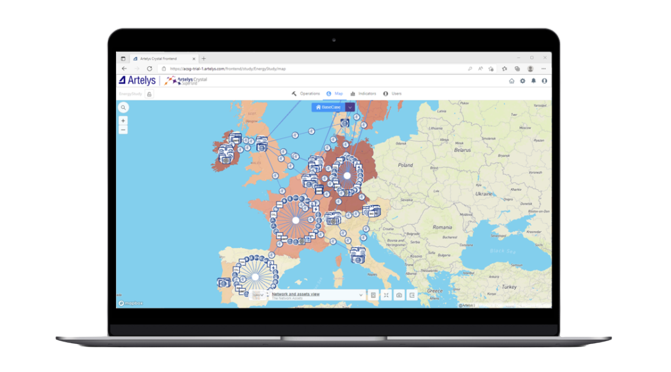
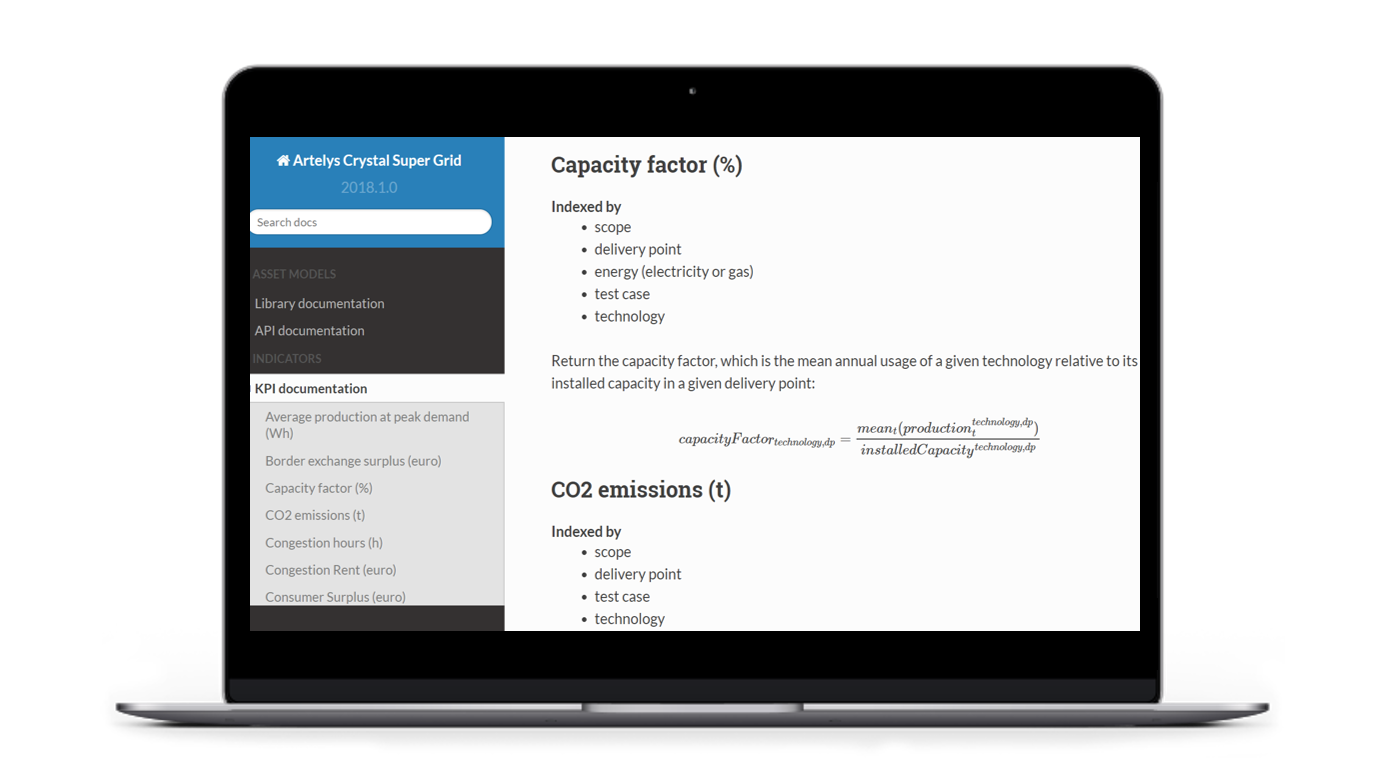
— Transparency
Collaborative work is at the core of our solution: datasets, scenarios and results are shared seamlessly within your team.
An exhaustive documentation of the models allows the users to find the precise definition of all parameters and to access the equations that bind them.
All parameters can be modified easily via the interface or via the import format.
— Multi-scenarios optimization of large systems
The systems modelled can be zonal or nodal and cover multiple energy carriers (electricity, gas, heat, hydrogen, etc.).
A large number of scenarios can be simulated in parallel, e.g. to assess the impacts of different climatic conditions.
Simulation: activation of flexibilities to reach the economic optimum while respecting the supply-demand balance, reserve requirements, and other techno-economic constraints.
Capacity expansion planning: finding the optimal investments taking into account operational and financial constraints.
Unit Commitment: optimize the operations of generation units with an increased level of accuracy.
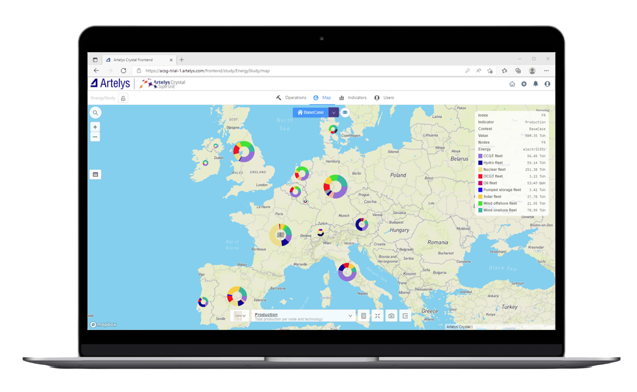
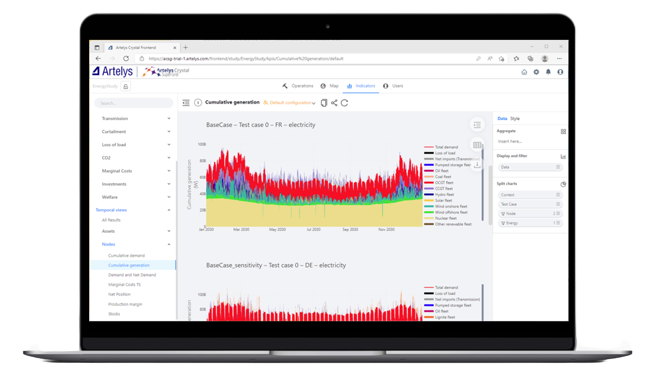
— Intuitive user interface
The model and its parameters are always accessible through the graphical user interface.
An extensive library of KPIs is provided: generation mix, activation of flexibilities, CO2 emissions, market price statistics, generators’ revenus, etc.
KPIs can be configured and shared within your team.
Complete a study in just a few clicks: edit the value of a parameter, launch the simulation, and assess the impacts via our scenario comparison mode.
— Support
A one-day training by our experienced instructors is enough to get you ready. Advanced training sessions are offered for our on-demand features.
Our support team is available to answer your questions. We also offer an expert modelling support service where our experts will assist you in setting up customized models.
Our customers are our priority: we take into account your feedback to integrate new features into our roadmap.
key features

— A ready-to-use modelling tool
No installation required, you only need a web browser to access and use Artelys Crystal Super Grid. Cloud computing allows you to perform your calculations directly from the web interface. Should you need more computing power, you can request extra on-demand computing power.
A library of state-of-the-art models resulting from our numerous customer experiences: electricity generation technologies, gas and heat assets, long-term contracts, flexibilities, coupling beetwen energy carriers, etc.
A fast-track initialization phase is ensured by the provision of simulation-ready datasets.
Contact us to more details about available datasets.
Multi-model management: the software allows for multiple models to coexist and to adapt seamlessly.

— Transparency
Collaborative work is at the core of our solution: datasets, scenarios and results are shared seamlessly within your team.
An exhaustive documentation of the models allows the users to find the precise definition of all parameters and to access the equations that bind them.
All parameters can be modified easily via the interface or via the import format.

— Multi-scenarios optimization of large systems
The systems modelled can be zonal or nodal and cover multiple energy carriers (electricity, gas, heat, hydrogen, etc.).
A large number of scenarios can be simulated in parallel, e.g. to assess the impacts of different climatic conditions.
Simulation: activation of flexibilities to reach the economic optimum while respecting the supply-demand balance, reserve requirements, and other techno-economic constraints.
Capacity expansion planning: finding the optimal investments taking into account operational and financial constraints.
Unit Commitment: optimize the operations of generation units with an increased level of accuracy.

— Intuitive user interface
The model and its parameters are always accessible through the graphical user interface.
An extensive library of KPIs is provided: generation mix, activation of flexibilities, CO2 emissions, market price statistics, generators’ revenus, etc.
KPIs can be configured and shared within your team.
Complete a study in just a few clicks: edit the value of a parameter, launch the simulation, and assess the impacts via our scenario comparison mode.
— Support
A one-day training by our experienced instructors is enough to get you ready. Advanced training sessions are offered for our on-demand features.
Our support team is available to answer your questions. We also offer an expert modelling support service where our experts will assist you in setting up customized models.
Our customers are our priority: we take into account your feedback to integrate new features into our roadmap.
METIS
— Artelys has developed the METIS model for the European Commission’s Directorate-General for Energy. This tool is used to model multi-energy systems (electricity, gas and heat) on a national or regional scale, with an hourly time granularity.
METIS Studies
METIS Documentation
METIS Scenarios
METIS
— Artelys has developed the METIS model for the European Commission’s Directorate-General for Energy. This tool is used to model multi-energy systems (electricity, gas and heat) on a national or regional scale, with an hourly time granularity.
METIS Studies
METIS Documentation
METIS Scenarios
METIS STUDIES
As part of the METIS project, about 30 studies on the future of the energy mix in Europe have been carried out to provide a quantitative and qualitative analysis of various forward-looking issues. These studies are intended for the Commission’s key decision-makers, to help them make informed choices about energy directives and understand their impact.
METIS 1 STUDIES: POWER AND GAS SYSTEMS MODELLING
S1 “Optimal flexibility portfolios for a high RES 2050 scenario”, 2018, Read more. S2 “Assessing TYNDP 2014 PCI list in power”, 2016, Read more. S4 “Generation and system adequacy analysis”, 2016, Read more. S5 “Impact of PCIs on gas security of supply in Europe”, 2016, Read more. S6 “Decentralised heat pumps – System benefits under different technical configurations”, 2018, Read more. S7 “The role of flexibility in 2030 -Focus on energy storage”, 2016, Read more. S8 “The role and potential of Power-to-X in 2050”, 2018, Read more. S9 “Cost-efficient district heating development”, 2018, Read more. S11 “Effect of high-shares of renewables on power systems”, 2018, Read more. S12 “Assessing market design options in 2030”, 2016, Read more. S13 “Effect of electromobility on the power system and the integration of RES”, 2018, Read more. S14 “Wholesale market prices, revenues and risks for producers with high shares of variable RES in the power system”, 2018, Read more. S16 “Weather-driven revenue uncertainty for power producers and ways to mitigate it”, 2016, Read more. S18 “Simulating electricity market bidding and price caps in the European power markets”, 2017, Read more.
mETIS 2 STUDIES: TRANSMISSION AND DISTRIBUTION GRIDS MODELLING
S1 “Assessing the role and magnitude of different flexibility measures”, 2023, Read more. S3 “Role of hydropower in a decarnonised energy system”, 2023, Read more. S4 “2050 no regret options and technology locks-ins”, 2023, Read more. S6 “Assessing the balance between direct electrification and the use of decarbonised gases in the 2050 EU energy system”, 2023, Read more.
METIS 3 STUDIES: MULTI-ENERGY AND MULTI-SECTOR MODELLING
S1/10 “Short-term sector coupling model: Outlook on EU gas adequacy”, 2024, Read more. S3 “Costs and benefits of a pan-European hydrogen infrastructure”, 2021, Read more I Data. S4 “Europe’s energy infrastructure configurations: A 2030-2050 outlook”, 2024, Read more. S5 “The impact of industry transition on a CO2 neutral European energy system”, 2021, Read more. S7 “The role of regional energy networks in a decarbonised European energy system”, 2025, Read more. S8 “Assessing hydrogen infrastructure needs in a scenario with hydrogen imports and EU production”, 2023, Read more I Data.
JRC STUDIES CARRIED OUT WITH METIS
“The impact of decarbonising the iron and steel industry on European power and hydrogen systems”, 2024, Read more. “Climate variability on Fit for 55 European power systems”, 2023, Read more. “The Merit Order and Price-Setting Dynamics in European Electricity Markets”, 2023, Read more. “The Heat Pump Wave: Opportunities and Challenges”, 2023, Read more. “Flexibility requirements and the role of storage in future European power systems”, 2022, Read more. “Simulating the electricity price hike in 2021”, 2022, Read more. “Impact of storage obligations on the EU gas market”, 2022, Read more. “Blending hydrogen from electrolysis into the European gas grid”, 2022, Read more. “The impact of PCI projects on the current and future European power & gas systems”, 2021, Read more. “Wind and other CO2-free assets replacing coal in 2030”, 2020, Read more. “The operation of the European Power System in 2016”, 2019, Read more. “Potential role of H2 production in a sustainable future power system”, 2019, Read more. “Scenario analysis of accelerated coal phase-out”, 2019, Read more.
OTHER STUDIES CARRIED OUT BY ARTELYS WITH METIS
European Commission, “Assistance to assessing options improving market conditions for bio-methane and gas market rules”, 2021, Read more. European Commission, “Technical support for RE policy development and implementation”, 2021, Read more. European Commission, “Mainstreaming RES – Design of flexibility portfolios at Member State level to facilitate a cost-efficient integration of high share of renewables”, 2017, Read more.
METIS STUDIES
As part of the METIS project, about 30 studies on the future of the energy mix in Europe have been carried out to provide a quantitative and qualitative analysis of various forward-looking issues. These studies are intended for the Commission’s key decision-makers, to help them make informed choices about energy directives and understand their impact.
METIS 1 STUDIES: POWER AND GAS SYSTEMS MODELLING
S1 “Optimal flexibility portfolios for a high RES 2050 scenario”, 2018, Read more. S2 “Assessing TYNDP 2014 PCI list in power”, 2016, Read more. S4 “Generation and system adequacy analysis”, 2016, Read more. S5 “Impact of PCIs on gas security of supply in Europe”, 2016, Read more. S6 “Decentralised heat pumps – System benefits under different technical configurations”, 2018, Read more. S7 “The role of flexibility in 2030 -Focus on energy storage”, 2016, Read more. S8 “The role and potential of Power-to-X in 2050”, 2018, Read more. S9 “Cost-efficient district heating development”, 2018, Read more. S11 “Effect of high-shares of renewables on power systems”, 2018, Read more. S12 “Assessing market design options in 2030”, 2016, Read more. S13 “Effect of electromobility on the power system and the integration of RES”, 2018, Read more. S14 “Wholesale market prices, revenues and risks for producers with high shares of variable RES in the power system”, 2018, Read more. S16 “Weather-driven revenue uncertainty for power producers and ways to mitigate it”, 2016, Read more. S18 “Simulating electricity market bidding and price caps in the European power markets”, 2017, Read more.
mETIS 2 STUDIES: TRANSMISSION AND DISTRIBUTION GRIDS MODELLING
S1 “Assessing the role and magnitude of different flexibility measures”, 2023, Read more. S3 “Role of hydropower in a decarnonised energy system”, 2023, Read more. S4 “2050 no regret options and technology locks-ins”, 2023, Read more. S6 “Assessing the balance between direct electrification and the use of decarbonised gases in the 2050 EU energy system”, 2023, Read more.
METIS 3 STUDIES: MULTI-ENERGY AND MULTI-SECTOR MODELLING
S1/10 “Short-term sector coupling model: Outlook on EU gas adequacy”, 2024, Read more. S3 “Costs and benefits of a pan-European hydrogen infrastructure”, 2021, Read more I Data. S4 “Europe’s energy infrastructure configurations: A 2030-2050 outlook”, 2024, Read more. S5 “The impact of industry transition on a CO2 neutral European energy system”, 2021, Read more. S7 “The role of regional energy networks in a decarbonised European energy system”, 2025, Read more. S8 “Assessing hydrogen infrastructure needs in a scenario with hydrogen imports and EU production”, 2023, Read more I Data.
JRC STUDIES CARRIED OUT WITH METIS
“The impact of decarbonising the iron and steel industry on European power and hydrogen systems”, 2024, Read more. “Climate variability on Fit for 55 European power systems”, 2023, Read more. “The Merit Order and Price-Setting Dynamics in European Electricity Markets”, 2023, Read more. “The Heat Pump Wave: Opportunities and Challenges”, 2023, Read more. “Flexibility requirements and the role of storage in future European power systems”, 2022, Read more. “Simulating the electricity price hike in 2021”, 2022, Read more. “Impact of storage obligations on the EU gas market”, 2022, Read more. “Blending hydrogen from electrolysis into the European gas grid”, 2022, Read more. “The impact of PCI projects on the current and future European power & gas systems”, 2021, Read more. “Wind and other CO2-free assets replacing coal in 2030”, 2020, Read more. “The operation of the European Power System in 2016”, 2019, Read more. “Potential role of H2 production in a sustainable future power system”, 2019, Read more. “Scenario analysis of accelerated coal phase-out”, 2019, Read more.
OTHER STUDIES CARRIED OUT BY ARTELYS WITH METIS
European Commission, “Assistance to assessing options improving market conditions for bio-methane and gas market rules”, 2021, Read more. European Commission, “Technical support for RE policy development and implementation”, 2021, Read more. European Commission, “Mainstreaming RES – Design of flexibility portfolios at Member State level to facilitate a cost-efficient integration of high share of renewables”, 2017, Read more.
METIS DOCUMENTATION
The document “Introduction to METIS models” serves as an entry point for understanding the METIS models and data. It presents the documentation available, the source code and the data used, and explains how to use them to understand the equations underlying the different models, how the scenarios are built, and what indicators are available for analysing the results of a simulation.
METIS 1: POWER AND GAS SYSTEMS
MODELLING
MODEL
TECHNICAL NOTES
Note 1: Integration of PRIMES scenarios into METIS Note 2: METIS power market models Note 3: Market module configuration for S12 Note 4: Overview of European electricity market Note 5: METIS software introduction and architecture Note 6: METIS power system module Note 7: METIS gas system module Note 8: METIS demand and heat modules
METIS 2: TRANSMISSION AND DISTRIBUTION GRIDS MODELLING
MODEL
Hydro model Distribution grid – data collection I climatic zones
METIS 3: SECTORIAL AND VECTORIAL INTEGRATION
TECHNICAL NOTES
Note 1: Data collection
METIS DOCUMENTATION
The document “Introduction to METIS models” serves as an entry point for understanding the METIS models and data. It presents the documentation available, the source code and the data used, and explains how to use them to understand the equations underlying the different models, how the scenarios are built, and what indicators are available for analysing the results of a simulation.
METIS 1: POWER AND GAS SYSTEMS MODELLING
MODEL
TECHNICAL NOTES
Note 1: Integration of PRIMES scenarios into METIS Note 2: METIS power market models Note 3: Market module configuration for S12 Note 4: Overview of European electricity market Note 5: METIS software introduction and architecture Note 6: METIS power system module Note 7: METIS gas system module Note 8: METIS demand and heat modules
METIS 2: TRANSMISSION AND DISTRIBUTION GRIDS MODELLING
MODEL
Hydro model Distribution grid – data collection I climatic zones
TECHNICAL NOTES
METIS 3: SECTORIAL AND VECTORIAL INTEGRATION
TECHNICAL NOTES
Note 1: Data collection
METIS SCENARIOS
The METIS project involves the development of various energy system models, as well as different scenarios based on European Commission data. These are prospective scenarios of the European system for different target years.
Each scenario is defined by a set of Excel files containing all the relevant input data for the given system. These files also refer to a common time series database (located in the TemporalData folder), which contains all the data with an hourly or daily granularity. Information on the sources of the various technical parameters can be found as comments in the Excel scenario files.
METIS 1: POWER AND GAS SYSTEMS MODELLING
EUROPEAN COMMISSION SCENARIOS
METIS 2: TRANSMISSION AND DISTRIBUTION GRIDS MODELLING
AVAILABLE SOON.
METIS SCENARIOS
The METIS project involves the development of various energy system models, as well as different scenarios based on European Commission data. These are prospective scenarios of the European system for different target years.
Each scenario is defined by a set of Excel files containing all the relevant input data for the given system. These files also refer to a common time series database (located in the TemporalData folder), which contains all the data with an hourly or daily granularity. Information on the sources of the various technical parameters can be found as comments in the Excel scenario files.
METIS 1: POWER AND GAS SYSTEMS MODELLING
EUROPEAN COMMISSION SCENARIOS
METIS 2: TRANSMISSION AND DISTRIBUTION GRIDS MODELLING
AVAILABLE SOON.
they trust Artelys Crystal Super Grid
check out how Artelys Crystal Super Grid is used

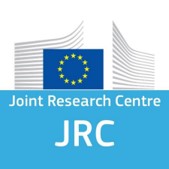
Joint Research Center, “The impact of decarbonising the iron and steel industry on European power and hydrogen systems”, 2024, Read more.
Joint Research Center, “Climate variability on Fit for 55 European power systems”, 2023, Read more.
Joint Research Center, “The Merit Order and Price-Setting Dynamics in European Electricity Markets”, 2023, Read more.
Joint Research Center, “The Heat Pump Wave: Opportunities and Challenges”, 2023, Read more.
Joint Research Center, “Flexibility requirements and the role of storage in future European power systems”, 2022, Read more.
Joint Research Center, “Simulating the electricity price hike in 2021”, 2022, Read more.
Joint Research Center, “Impact of storage obligations on the EU gas market”, 2022, Read more.
Joint Research Center, “Blending hydrogen from electrolysis into the European gas grid”, 2022, Read more.
Joint Research Center, “The impact of PCI projects on the current and future European power & gas systems”, 2021, Read more.
Joint Research Center, “Wind and other CO2-free assets replacing coal in 2030”, 2020, Read more.
Joint Research Center, “The operation of the European Power System in 2016”, 2019, Read more.
Joint Research Center, “Potential role of H2 production in a sustainable future power system”, 2019, Read more.
Joint Research Center, “Scenario analysis of accelerated coal phase-out”, 2019, Read more.
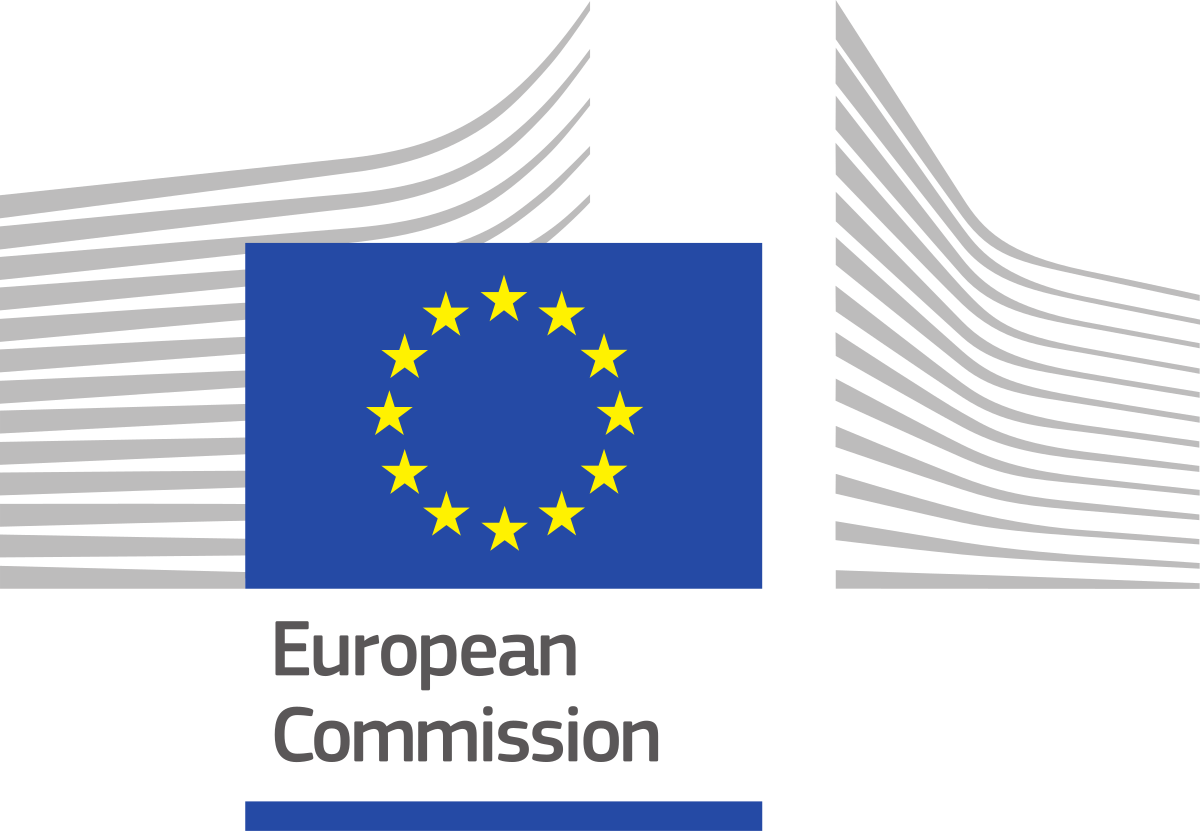
European Commission, “Evaluating the cost-competitiveness of low-carbon energy in future EU power markets”, 2025, Read more.
European Commission, “METIS study on costs and benefits of a pan-European hydrogen infrastructure”, 2021, Read more.
European Commission, “Study on energy storage: Contribution of energy storage to the security of the electricity supply in Europe”, 2020, Read more.
European Commission, “Optimal flexibility portfolio for a high-RES 2050 scenario”, 2018,Read more.
European Commission, “Wholesale market prices, revenues and risks for producers with high shares of variable RES in the power system”, 2018, Read more.

Federal Planning Bureau, “Bon vent: setting sail for a climate neutral Belgian energy system – Future Belgian offshore wind unravelled”, 2021, Read more.
Federal Planning Bureau, “Fuel for the future: More molecules or deep electrification of Belgium’s energy system by 2050”, 2020, Read more.
Federal Planning Bureau, “Insights in a clean energy future for Belgium – Impact assessment of the 2030 Climate & Energy Framework”, 2018, Read more.
Federal Planning Bureau, “Cost-benefit analysis of a selection of policy scenarios on an adequate future Belgian power system”, 2017,Read more.
Federal Planning Bureau, “Drivers of wholesale electricity prices in a small, open economy: Some evidence from the nuclear restart in Belgium”, 2016, Read more.
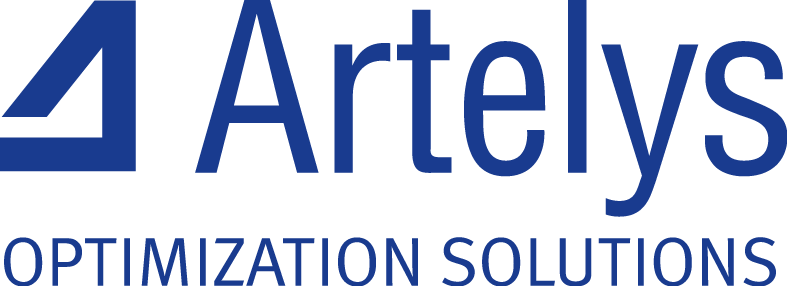
100+ high impact studies led by our consutants have been powered by Artelys Crystal Super Grid. Check out our publications to know more!
choose from our subscription packages
— Ready to-go Artelys Crystal Super Grid Initial or fully-customized Artelys Crystal Super Grid Plus?

Artelys Crystal Super Grid Cloud
Standard library of assets and KPIs
Artelys Crystal Optimization Engine
Simulation-ready datasets
Trainings
Software support & maintenance (incl. updates)
Expert modelling support service (optional)

Need a specific feature? Get in touch, we may already be working on it!
check out how Artelys Crystal Super Grid is used
Joint Research Center, “The Merit Order and Price-Setting Dynamics in European Electricity Markets”, 2023, Read more.
Joint Research Center, “The Heat Pump Wave: Opportunities and Challenges”, 2023, Read more.
Joint Research Center, “Flexibility requirements and the role of storage in future European power systems”, 2022, Read more.
Joint Research Center, “Simulating the electricity price hike in 2021”, 2022, Read more.
Joint Research Center, “Impact of storage obligations on the EU gas market”, 2022, Read more.
Joint Research Center, “Blending hydrogen from electrolysis into the European gas grid”, 2022, Read more.
Joint Research Center, “The impact of PCI projects on the current and future European power & gas systems”, 2021, Read more.
Joint Research Center, “Wind and other CO2-free assets replacing coal in 2030”, 2020, Read more.
Joint Research Center, “The operation of the European Power System in 2016”, 2019, Read more.
Joint Research Center, “Potential role of H2 production in a sustainable future power system”, 2019, Read more.
Joint Research Center, “Scenario analysis of accelerated coal phase-out”, 2019, Read more.
.European Commission, “METIS study on costs and benefits of a pan-European hydrogen infrastructure”, 2021, Read more.
European Commission, “Study on energy storage: Contribution of energy storage to the security of the electricity supply in Europe”, 2020, Read more.
European Commission, “Optimal flexibility portfolio for a high-RES 2050 scenario”, 2018,Read more.
European Commission, “Wholesale market prices, revenues and risks for producers with high shares of variable RES in the power system”, 2018, Read more.
Federal Planning Bureau, “Bon vent: setting sail for a climate neutral Belgian energy system – Future Belgian offshore wind unravelled”, 2021, Read more.
Federal Planning Bureau, “Fuel for the future: More molecules or deep electrification of Belgium’s energy system by 2050”, 2020, Read more.
Federal Planning Bureau, “Insights in a clean energy future for Belgium – Impact assessment of the 2030 Climate & Energy Framework”, 2018, Read more.
Federal Planning Bureau, “Cost-benefit analysis of a selection of policy scenarios on an adequate future Belgian power system”, 2017,Read more.
Federal Planning Bureau, “Drivers of wholesale electricity prices in a small, open economy: Some evidence from the nuclear restart in Belgium”, 2016, Read more.
100+ high impact studies led by our consutants have been powered by Artelys Crystal Super Grid. Check out our publications to know more!
choose from our subscription packages
— Ready to-go Artelys Crystal Super Grid Initial or fully-customized Artelys Crystal Super Grid Plus?

Artelys Crystal Super Grid Cloud
Standard library of assets and KPIs
Artelys Crystal Optimization Engine
Simulation-ready datasets
Trainings
Software support & maintenance (incl. updates)
Expert modelling support service (optional)

Need a specific feature? Get in touch, we may already be working on it!
contact us
© ARTELYS • All rights reserved • Legal mentions

